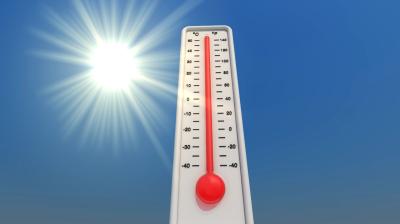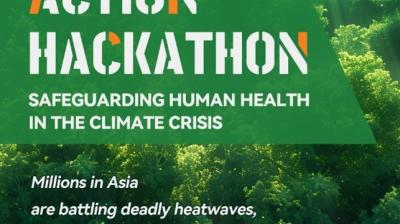Prolonged Siberian heat "almost impossible without climate change"

The recent prolonged Siberia heat from January to June 2020 would have been almost impossible without the influence of human-caused climate change, according to a rapid attribution analysis by a team of leading climate scientists.
The researchers from international universities and meteorological services from the Russian Federation, France, Germany, Netherlands, Switzerland and the United Kingdom also found that temperatures were more than 2°C hotter than they would have been if humans had not influenced the climate by releasing greenhouse gas emissions.
Temperatures in Siberia have been more than 5°C above average from January to June, and in June up to 10°C above average. This has contributed to the first half of the year being the second warmest on record. A temperature of 38°C was recorded in the Russian town of Verkhoyansk on 20 June. WMO will now verify whether this is a new record temperature north of the Arctic Circle and establish a corresponding new category in its Global Weather and Climate Extremes Archive.

To measure the effect of climate change on these high temperatures, the scientists contributing to the World Weather Attribution (WWA) initiative ran computer simulations to compare the climate as it is today, with about 1°C of global warming, with the climate as it would have been without human influence, using the same methods as in past rapid and peer-reviewed studies.
"In many previous studies we have seen hot spells and heatwaves become hotter and more frequent around the world, consistent with our scientific understanding. In places such as Siberia, a hotter climate can have devastating effects, not just on the local wildlife and people who live there, but also on the world’s climate system as a whole, for example through thawing permafrost, reduced snow cover and melting ice," said the World Weather Attribution scientists.
Their analysis showed that prolonged heat like Siberia experienced from January to June this year would only happen less than once in every 80,000 years without human-induced climate change - making it almost impossible in a climate that had not been warmed by greenhouse gas emissions. Climate change increased the chances of the prolonged heat by a factor of at least 600. This is among the strongest results of any attribution study conducted to date and is unequivocal evidence of the influence of human-induced climate change on the planet.
The scientists noted that even in the current climate the prolonged heat was still unlikely: such extreme conditions can be expected to occur less than once every 130 years. But without rapid cuts in greenhouse gas emissions they risk becoming frequent by the end of the century.

The heat in Siberia has triggered widespread fires, with 1.15 million hectares burning in late June, associated with a release of about 56 million tonnes of carbon dioxide - more than the annual emissions of some industrialised countries such as Switzerland and Norway. These fires are continuing into the secnd half of July.
It also accelerated the melting of permafrost. Greenhouse gases released by the fires and melting permafrost - as well as decreases in the planet’s reflectivity from loss of snow and ice - will further heat the planet. The heat has also been linked with an outbreak of silk moths, whose larvae eat conifer trees.
Prof. Olga Zolina, P.P.Shirshov Institute of Oceanology, RAS, Moscow, and CNRS Institut des Géosciences de l’Environnement, Grenoble, lead author IPCC AR6: “This study shows that not only was the magnitude of the temperature extremely rare but also the weather patterns that caused it. The blocking of the weather system over the Urals that caused the prolonged period of heat is projected to intensify with climate change leading to more events like this potentially occurring. We are continuing to study how the wildfires that have burned over thousands of hectares might also affect the climate as the flames pump smoke and ash into the atmosphere.”
Lead author of the research and Senior Detection and Attribution scientist at the Met Office Andrew Ciavarella: “The findings of this rapid research – that climate change increased the chances of the prolonged heat in Siberia by at least 600 times – are truly staggering. This research is further evidence of the extreme temperatures we can expect to see more frequently around the world in a warming global climate. Importantly, an increasing frequency of these extreme heat events can be moderated by reducing greenhouse gas emissions.”
Dr. Friederike Otto, acting director of Oxford’s Environmental Change Institute, and co-lead of the World Weather Attribution initiative: “This study shows again just how much of a game changer climate change is with respect to heatwaves. Given that heatwaves are by far the deadliest extreme weather events in most parts of the world they must be taken very seriously. As emissions continue to rise we need to think about building resilience to extreme heat all over the world, even in Arctic communities – which would have seemed nonsensical not very long ago.”
Prof. Sonia Seneviratne from the Department of Environmental Systems Science at ETH Zurich (D-USYS), a lead author on several IPCC reports: “These results show that we are starting to experience extreme events which would have almost no chance of happening without human footprint on the climate system. We have little time left to stabilize global warming at levels at which climate change would remain within the bounds of the Paris Agreement. For a stabilization at 1.5°C of global warming, which would still imply more risks of such extreme heat events, we need to reduce our CO2 emissions by at least half until 2030.”
The full study is available here










